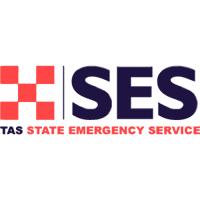Navigating Climate Physical Risks can be Complex and Daunting
MAPPING CLIMATE PHYSICAL RISKS AND VEGETATION WITH PRECISION
Geoneon specialises in advanced geospatial solutions to map climate physical risks and vegetation, providing clear, actionable insights for informed decision-making and enhanced reporting.


Unlock the Advantages of Geoneon's Advanced Mapping Solutions
In an increasingly uncertain climate landscape, navigating risks can feel daunting. Geoneon’s innovative mapping technology delivers consistent, time-efficient, and detailed insights across all scales. Benefit from seamless updates, comprehensive analysis, and global scalability, empowering you to make data-driven decisions with confidence and ease.
Geoneon's AI-powered data processing and mapping significantly reduce the time it takes to produce comprehensive climate risk maps.
How much are inadequate climate physical risk maps really costing you?
Navigating complex geospatial data can be overwhelming, and making decisions without clear and reliable maps can lead to uncertainties. Geoneon’s approach focuses on providing you with clear, detailed, and data-driven climate physical risk insights, leveraging the strengths of AI technology to offer a different perspective compared to traditional methods.
Trusted By Leading Organisations
Geoneon's climate physical risk mapping tools have been adopted and trusted by a diverse range of businesses, government agencies, and non-profit organisations. Here are some of our clients who rely on our technology to inform their climate strategies.












Your Journey to Climate Physical Risks Mapping
With our straightforward three-step plan, navigating climate physical risk becomes as easy as 1-2-3. We have lifted the fog, outlining a clear path to resilience that makes partnering with Geoneon an obvious and simple choice. By working with us, you are stepping into a brighter, safer, and more informed future.

We start with an expert consultation to understand your needs and objectives, and evaluate your current climate physical risk landscape. This step removes the guesswork and provides a clear starting point for your climate risk mapping journey.

At this stage, we collaborate with you to identify and prioritise the most pertinent metrics that align with your organisation's goals and vulnerabilities. This step empowers you to focus on what truly matters, ensuring that your climate risk analysis is both relevant and actionable.

After selecting the metrics, we produce your initial climate physical risk map and establish a mechanism for ongoing monitoring of your selected metrics. We offer updates at a frequency that fits your needs, enabling you to stay alert and reactive to shifts in your climate risk landscape.
Addressing Your Frequently Asked Questions
We at Geoneon understand that the complexities of climate physical risk management can lead to a multitude of questions and concerns. Our objective is to ensure that you feel completely confident in our services and our ability to cater to your unique needs.
Geoneon Updates & Insight
- 01 Embracing Resilience
- 02 Problem & Solution
- 03 Action Plan
- 04 Take Action
Identifying Your Desire for Proactive Climate Physical Risk Management
Overcoming Challenges with Geoneon's Expertise
Geoneon's Three-Step Approach Towards Climate Reporting
Here is how it works:
- Initial Assessment: We conduct an initial assessment to understand your unique needs and objectives, and to evaluate your current climate physical risk landscape.
- Metric Selection: We collaborate with you to select the most pertinent climate physical risk metrics tailored to your interests and concerns.
- Mapping & Monitoring: Finally, we generate your climate physical risk map and establish continuous monitoring, providing updates to suit your needs.
